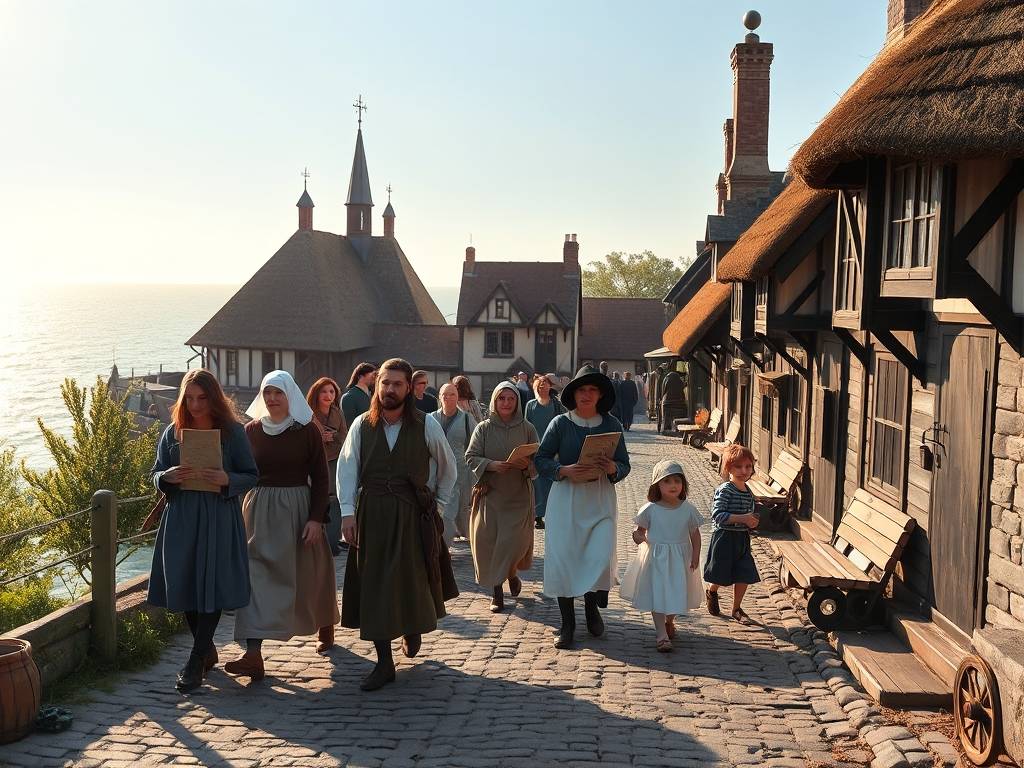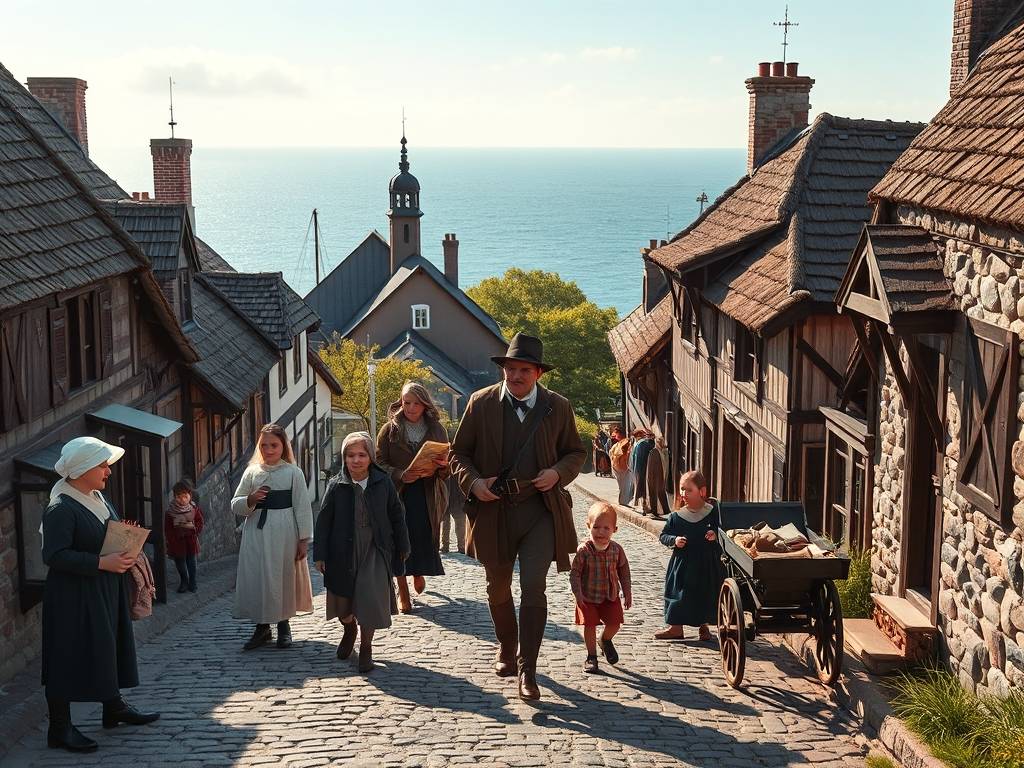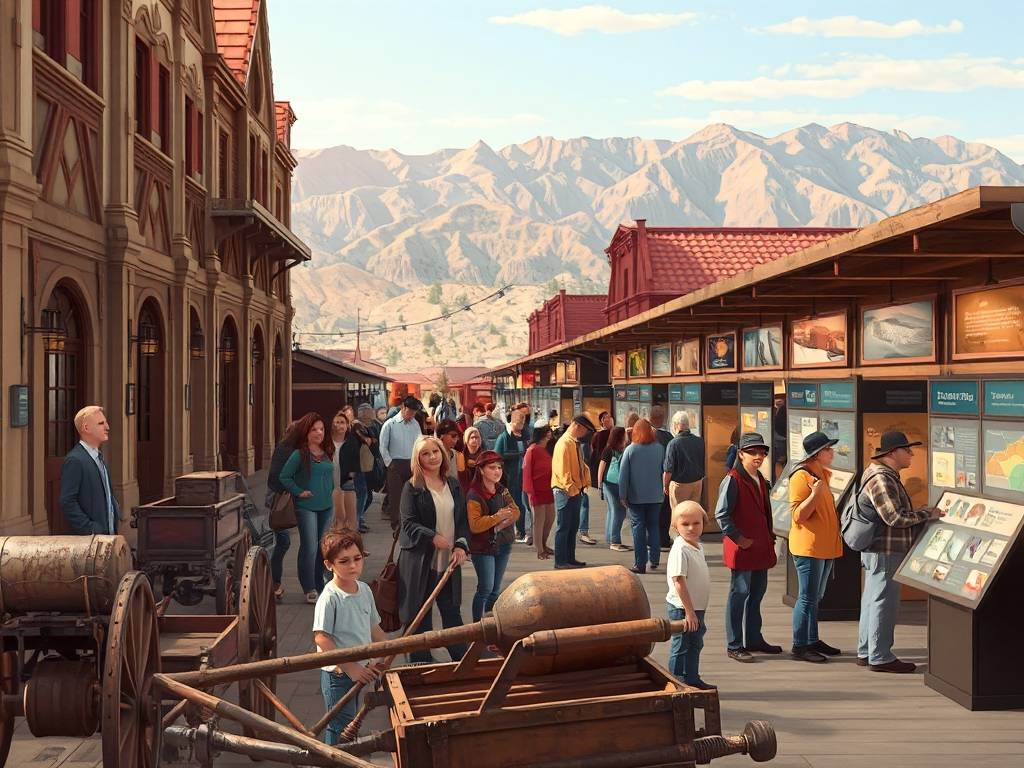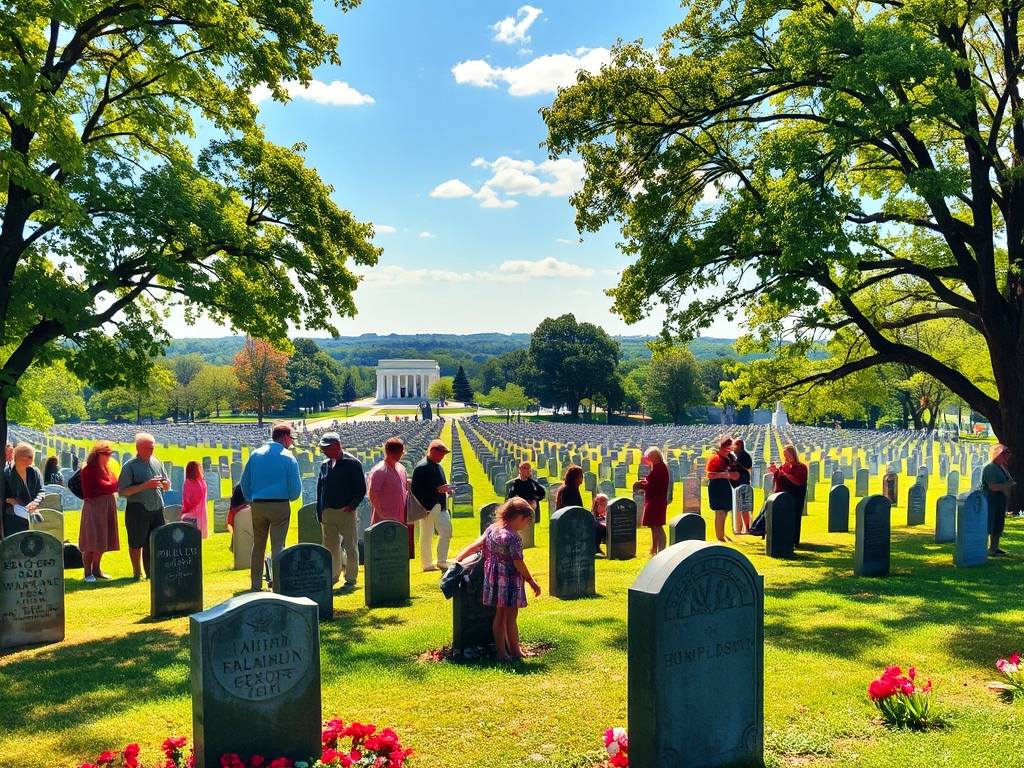USA Travel
US Travel: Early American Settlement Tours in Massachusetts’s Plymouth
Footsteps of the Founders: A Journey Through Plymouth's Living History
Close your eyes for a moment and listen. Can you hear the creak of old timber, the whisper of the Atlantic wind through centuries-old trees, or the distant echo of a ship's bell? Welcome to Plymouth, Massachusetts, a place where American history isn't just found in textbooks; it's etched into the very landscape, waiting to be explored. More than just a "rock," Plymouth offers a profound and immersive journey into the story of the Pilgrims, a tale of resilience, community, and the complex beginnings of a nation. This isn't merely a sightseeing trip; it's an early American history tour that invites you to walk in the footsteps of the Pilgrims and connect with the origins of the United States.
Your pilgrimage rightly begins at the epicenter of the story: Plymouth Rock. Housed within its iconic granite canopy on the waterfront, the rock itself is a powerful, if simple, monument. While its size may surprise you, its significance is monumental. It serves as a tangible touchstone, a symbol of the moment in 1620 when these weary travelers first stepped onto land after their perilous voyage. Stand here, feel the sea breeze, and look out over the harbor. It’s the perfect starting point for imagining the arrival of the Mayflower ship, a vessel that has become synonymous with courage and new beginnings.

And what of that famous ship? Just a short walk away, you will find Plymouth Harbor, home to Mayflower II, a full-scale replica that is a marvel of historical craftsmanship. This is not a static display; it's a living, breathing portal to the 17th century. As you step aboard, the world of 1620 unfolds around you. Costumed historical interpreters, portraying actual passengers and crew, are your guides. They don't just recite facts; they live and breathe their roles, sharing their fears, hopes, and the stark reality of the 66-day transatlantic voyage to the New World. You can feel the cramped quarters below deck, touch the rough-hewn planks, and understand the immense challenge of crossing an ocean in a ship not much larger than a modern-day tennis court. Engaging with these interpreters is one of the most enriching Plymouth Colony educational activities available, making history feel immediate and personal.

To truly complete the picture of the Pilgrims' first year, a visit to Plimoth Patuxet Museums (formerly Plimoth Plantation) is absolutely essential. This world-class living history museum consists of two primary sites that, when combined, offer a comprehensive narrative. First, step into the 1627 English Village. This is not a collection of models but a re-creation of the Pilgrims' settlement as it would have appeared in its early years. The thatched-roof houses, the kitchen gardens, the fort-meetinghouse—all are built using the tools and techniques of the period. Here, you'll meet "residents" who never break character. They will speak to you about their lives, their struggles with illness and hunger, their religious convictions, and their dealings with the local Native people. Asking them about their "first Thanksgiving experience" or their "journey on the Mayflower" yields answers filled with the passion and perspective of someone who lived it. It’s an unparalleled living history museum experience in Massachusetts.
The second, and equally vital, part of Plimoth Patuxet is the Wampanoag Homesite. This space is staffed by modern-day Indigenous people who are members of the Wampanoag Nation. Their presence provides a crucial and often overlooked perspective on this history. They are not in character; they are sharing the history and culture of their ancestors from their own vantage point. Here, you can learn about the sophisticated society that existed for thousands of years before the Pilgrims arrived. You'll see how a wetu (a traditional house) is built, how a dugout canoe is crafted, and how traditions of hunting, fishing, and agriculture were practiced. This part of the tour is fundamental to understanding the full story of colonial settlement and Native American relations. It fosters a deeper appreciation for the complex relationship between the Wampanoag people and the English settlers, a relationship that began with a pivotal peace treaty and lasted for decades.
For a quieter, more reflective experience, make your way to Burial Hill. This historic cemetery is the final resting place of many of the original Mayflower passengers. Wandering among the ancient, weathered gravestones, you can read the names that are now legendary: William Bradford, John Howland, Mary Allerton. It’s a solemn and powerful place that underscores the immense human cost of that first, brutal winter. This is where the story of survival becomes most poignant.
No historical tour of Plymouth is complete without honoring the legacy of the Native people who made survival possible. A visit to the Massasoit Monument pays tribute to the Pokanoket leader, Massasoit, whose diplomatic skill and decision to form an alliance with the Pilgrims were critical to the colony's success. It’s a moment to reflect on leadership, diplomacy, and the fragile nature of cross-cultural peace.
To tie your entire journey together, consider a guided walking tour of historic Plymouth. Knowledgeable guides can connect the dots between all these sites, sharing lesser-known anecdotes and pointing out details you might otherwise miss. They can direct you to other gems, like the Pilgrim Hall Museum, which houses an extraordinary collection of original Pilgrim possessions, from William Bradford's Bible to Myles Standish's sword. These artifacts provide an intimate connection to the people you've been learning about all day.
When planning your best time to visit Plymouth MA, consider the shoulder seasons of late spring (May-June) or early fall (September-October). The weather is pleasant, and the crowds are smaller than in the peak summer months. Of course, visiting around Thanksgiving offers a unique, albeit bustling, perspective on the first Thanksgiving history and reenactments.
Ultimately, a trip to Plymouth is more than a vacation; it's an education and an inspiration. It answers not just the "what" and "when," but the "who" and "why." It solves the user's quest for a deep, engaging, and multifaceted historical experience by bringing the past to life in a way that is both accessible and profound. You leave not just with photographs, but with a felt sense of the courage, hardship, and hope that defined the early American settlement. You carry with you the story of the Pilgrims, the Wampanoag people, and the enduring legacy they created on this very shore. So come, walk these paths, and let the whispers of history speak to you.
相关文章
- US Travel: Native American Powwow Experiences in Oklahoma
- US Travel: Historic Lighthouse Tours in Maine’s Portland Head
- US Travel: WWII Museum Visits in Louisiana’s New Orleans
- US Travel: Pioneer History Sites in Nebraska’s Omaha
- US Travel: Art Deco Architecture Tours in Florida’s Miami Beach
- US Travel: Historic Railroad Tours in Colorado’s Durango
- US Travel: African American Heritage Museums in Michigan’s Detroit
- US Travel: Spanish Colonial History Tours in New Mexico’s Santa Fe
- US Travel: Civil War Cemetery Visits in Virginia’s Arlington
- US Travel: Mining History Museums in Nevada’s Reno
发表评论
评论列表
- 这篇文章还没有收到评论,赶紧来抢沙发吧~


